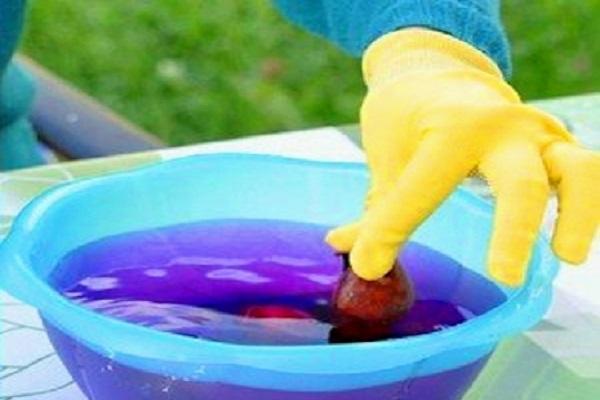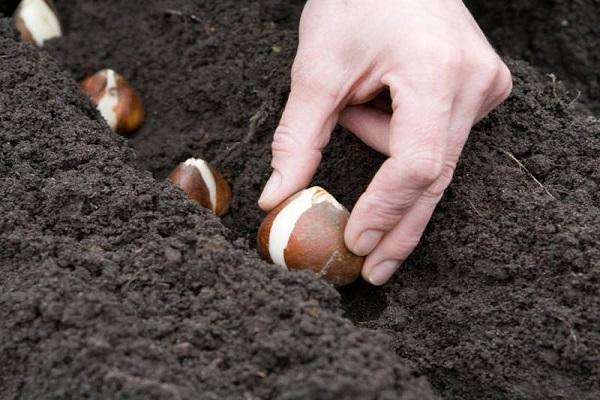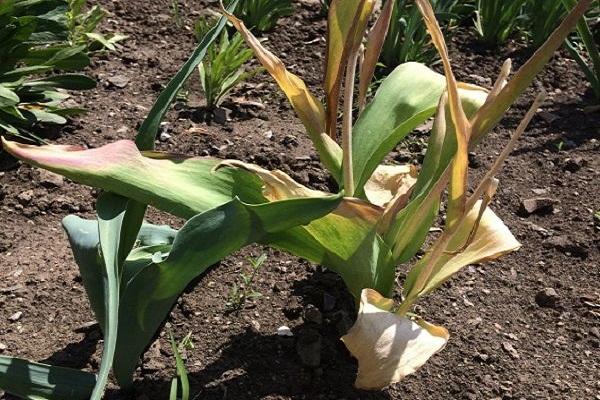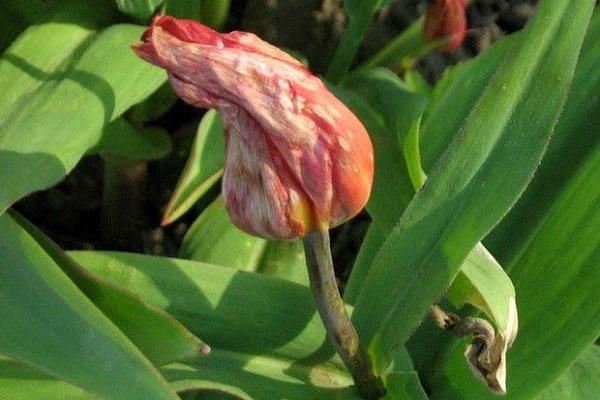Is it possible to plant tulips in spring, when and how to carry out the procedure
Tulips are traditionally planted in autumn. This approach provides the best flower survival rate. But due to the fact that many plants are sown after cold weather, the question arises whether it is possible to plant a tulip in spring. Gardeners declare that there are no direct contraindications to this. The main thing is to properly prepare the soil for planting and ensure regular flower care.
Can tulips be planted in spring?
The homeland of this plant is Central Asia. Flowers bloom in this area after the onset of spring. But with the onset of summer, the situation changes: due to the high temperature and lack of precipitation, many plants dry up.
In the warm season, the leaves of tulips fall off, and all the power is concentrated in the bulb. It is in the summer that the plant forms new roots.
During the winter, the flower picks up the nutrients necessary for growth, and blooms with the onset of heat. Bulbs planted in spring, with proper care, also take root. However, the onion must be prepared in advance.
Landing dates according to the lunar calendar and in different regions
The period when tulips can be planted depends on the region in which the plant is sown:
- southern regions - February or March;
- Middle Strip - April;
- northern territories - May.
According to the lunar calendar, it is recommended to land on 23 or 24 February, from 21 to 26 March, from 17 to 24 April, or from 19 to 21 May. For the bulbs to take root, the procedure must be completed before July. In this case, an important condition for successful germination is a suitable soil temperature at a depth of 10 centimeters, which should exceed 9 degrees.

Tulip planting technology in spring
Planting tulips in spring is allowed, provided that the rules for preparing the bulbs are followed. In order for the plant to take root, you must:
- wrap the bulbs in paper with small holes and put in the refrigerator, keeping the plant at a temperature of +4, +6 degrees for two to three months (more is possible);
- place the prepared onion for half an hour in a weak solution of potassium permanganate;
- inspect the bulbs for rot or other defects.
If the preparation rules are followed, after the onset of spring, you can start planting in the ground.

Seat selection
For sprouting tulips in spring, it is recommended to choose a place with constant and sufficient sunlight. Otherwise, the plant will begin to reach for the light source.You should also plant other flowers next to the tulips, since the first ones quickly fall off, as a result of which an empty space remains in the garden.
Disinfection
Subject to the rules for preparing tulips for planting in spring, additional disinfection of the plant or soil is not required.

Plot preparation
After the snow melts and the soil thaws, the bed in which it is planned to plant flowers is recommended to be dug to the depth of a bayonet shovel and loosened. This will ensure a sufficient supply of oxygen to the plant and a good survival rate of tulips. During digging, it is necessary to add a small amount of sand, which will act as a drain.
At the same time, any organic fertilizer should be applied to the soil, with the exception of manure. Also, good germination is provided by mineral (nitrogen) fertilizing.
Bulb wells
Bulb holes are recommended to be formed at a distance of 10 centimeters from each other. Before planting, the prepared pits should be watered.
Planting tulips in the ground
Flowers are planted in spring to a depth of 10-13 (large bulbs) or 5-8 (small). It is recommended to water the holes evenly, avoiding swamping of the area. After that, the plant is covered with soil, and the bed is leveled. At the end of the procedure, it is recommended to water the bulbs twice with an interval of 20 minutes. This ends the spring planting of tulips. Subject to the described rules, the first shoots will appear after two weeks.

How to care for planted tulips?
Tulips planted in spring start blooming later. In the period before bud formation, it is recommended to regularly remove weeds from the garden bed that interfere with the normal growth of the plant. At this time, it is necessary to ensure sufficient watering, avoiding waterlogging of the soil. Water should not get on the stems and leaves.
After each watering (rain), you should loosen the soil near the flower during the spring. This ensures a constant and sufficient supply of oxygen to the roots, thereby accelerating plant growth.
After the appearance of the first shoots, liquid mineral fertilizers are introduced into the soil: nitrogen, phosphorus and potassium, mixed in a 2: 2: 1 ratio.

How to care for tulips after flowering?
After the tulips have faded, it is recommended to remove the fallen leaves from the garden, while continuing to water the garden for 14 days. After one week, the heads of the plant must be trimmed. Thanks to this, the tulips will bloom again next year.
The stems must be cut when the plant turns yellow completely. When performing these manipulations, it is important not to touch the bulb. Then, in summer or autumn, on a sunny day, you need to dig up and dry the planting material.

Diseases and pests of tulips
Failure to comply with the rules for planting and caring for flowers planted in spring provokes:
- early decay (with an excess of moisture);
- drying out (with a lack of moisture);
- thinning of the stems (due to lack of sun);
- discoloration of leaves, growth retardation (due to acidic soil).
Even if the described recommendations are followed, it is impossible to prevent the development of diseases or pests. To provoke the death of flowers are capable of:

- Variegatedness. The disease is characterized by withering of the buds and the formation of streaks on stems and leaves. When variegation appears, you need to destroy the flower and not plant plants in this place for five subsequent years.
- White rot. It is characterized by the formation of bluish-gray spots on the flower. White rot develops on plants growing in waterlogged or acidified soil. To prevent contamination, it is recommended to periodically add small amounts of magnesium and calcium to the soil. If the disease is caused by an excess of nitrogen, the soil should be fertilized with lime.Affected flowers should be completely removed along with the roots.
- Wet rot (fusarium). It is distinguished by the appearance of brown spots on the flowers, along the perimeter of which a brown-red stripe runs. Wet rot develops in waterlogged soils during the period when the first shoots are formed. In this case, the air temperature should exceed 20 degrees. The affected flower is removed. Within 5 years after the discovery of fusarium, it is not recommended to plant plants in the same place.
In case of a deficiency of fertilization, tulips do not bloom. Deep planting of the bulbs can also lead to this.









